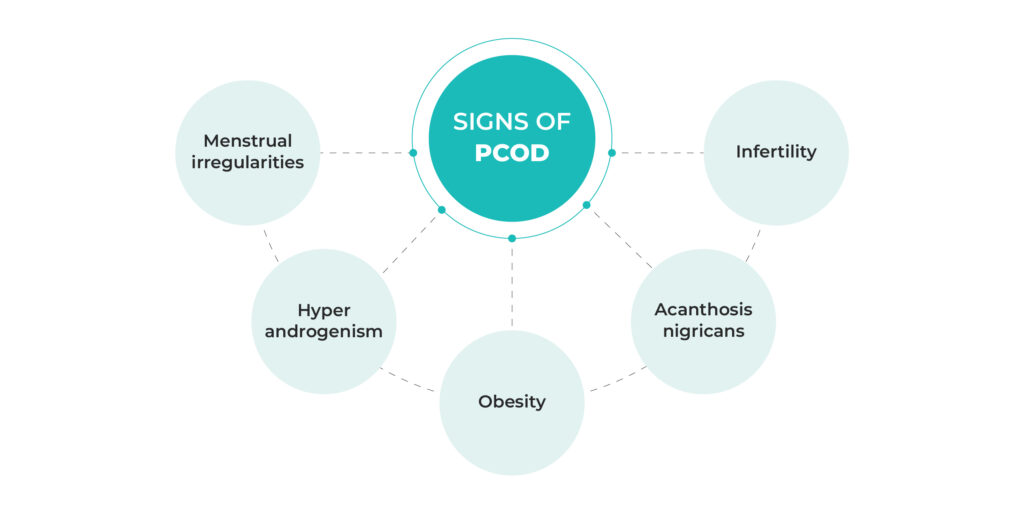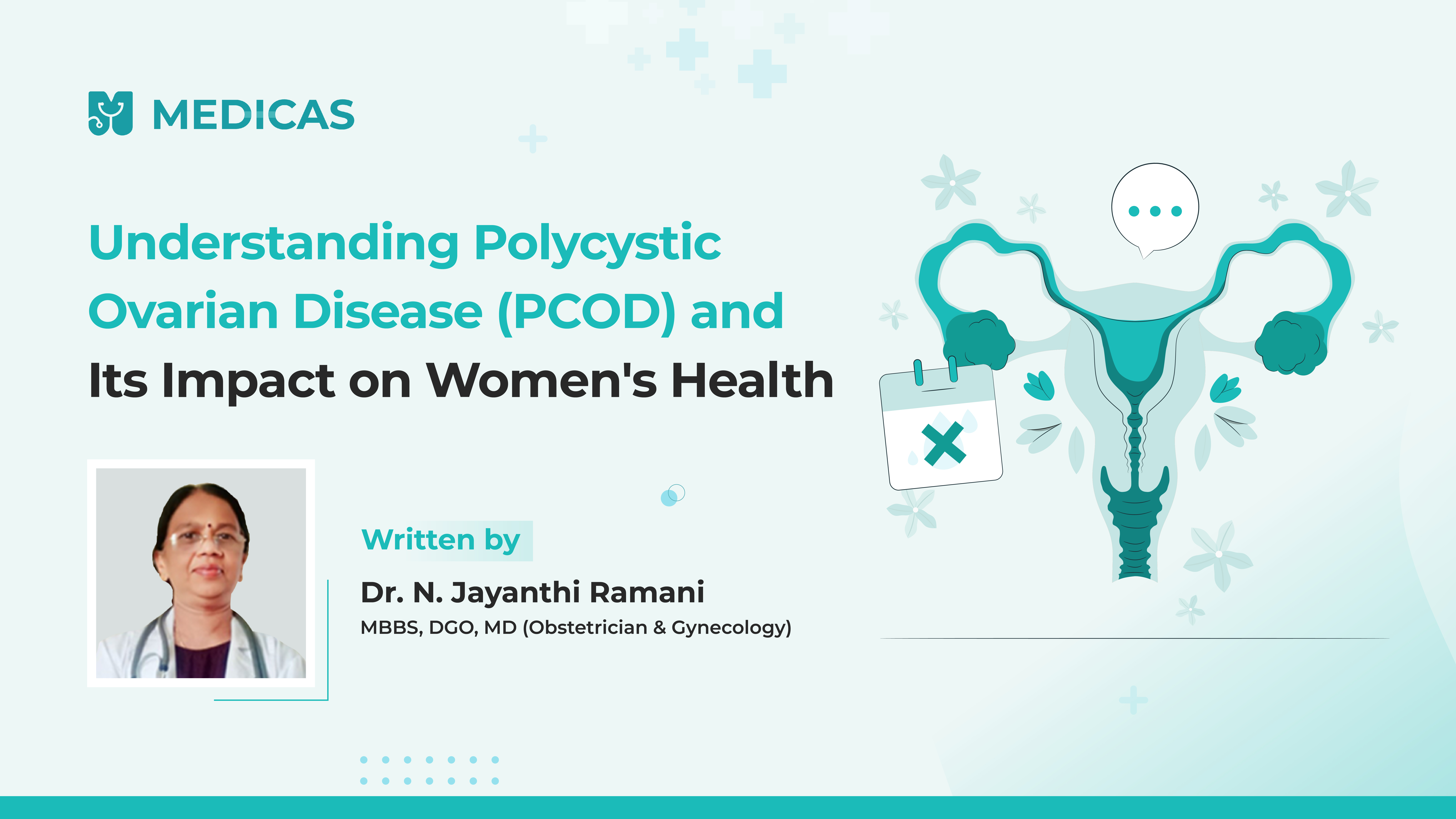Quick Links
Polycystic Ovarian Disease (PCOD) has become increasingly common in recent years. In fact, a study published in the Indian Journal of Biochemistry and Biophysics highlights that PCOD is now one of the most prevalent female endocrine disorders and a leading cause of infertility, with global prevalence ranging between 6-26%, and in India, from 3.7-22.5%. But when I was studying to be a doctor, this was far from the case. PCOD wasn’t even a subject we covered 40 years ago.
And there’s data to back that up, the prevalence of PCOD has surged by nearly 65% over the past decade.
What’s more concerning is that women diagnosed today often exhibit more severe symptoms, including a higher incidence of obesity, hyperandrogenism, and primary infertility compared to a decade ago.
So, what has caused this dramatic rise? We’ll explore that shortly, but first, let’s get to the basics.
What is the definition of PCOD?
Simply put, Polycystic Ovarian Disease (PCOD) is a condition in which the ovaries produce a large number of immature or partially mature eggs, leading to the formation of cysts. This disrupts ovulation and creates hormonal imbalances that can trigger a range of symptoms. According to the Rotterdam criteria, a diagnosis of PCOD requires a woman to have at least two of the following:
- Irregular or absent ovulation (causing infrequent or absent periods)
- Elevated levels of androgens (male hormones) leading to symptoms like acne or excessive hair growth
- Multiple ovarian cysts, typically 12 or more, detected through ultrasound
What are the signs of PCOD?
PCOD presents itself with a variety of symptoms, many of which overlap with other health conditions. However, here are the following key signs of PCOD:
- Menstrual irregularities: Inconsistent or absent periods are a hallmark of PCOD. Women may experience prolonged menstrual cycles, heavy bleeding, or even complete absence of periods (amenorrhea). In fact, this is one of the primary reasons why and how the vast majority of cases of PCOD cases are detected!
- Hyperandrogenism: Elevated levels of androgens result in symptoms like hirsutism (excess facial and body hair), acne, and oily skin.
- Obesity: Many women with PCOD struggle with weight gain and are categorized as overweight or obese, with a body mass index (BMI) exceeding 25. This further complicates the condition, increasing the risk of insulin resistance and metabolic syndrome.
- Acanthosis nigricans: Dark, velvety patches of skin on areas like the neck, underarms, and breasts are a telltale sign of insulin resistance, which is commonly seen in women with PCOD.
- Infertility: One of the most distressing symptoms of PCOD is infertility, driven by irregular ovulation or the complete absence of ovulation.

Understanding the PCOD Problem in Women
PCOD isn’t just a reproductive problem; it’s a systemic issue that affects many aspects of a woman’s health. It is closely linked to insulin resistance, which increases the risk of developing Type 2 diabetes. Women with PCOD are also more likely to suffer from cardiovascular issues due to high cholesterol levels, elevated triglycerides, and low HDL cholesterol. The emotional toll is equally significant, with many women experiencing anxiety, depression, and low self-esteem due to the physical manifestations of PCOD. It is important to recognise the signs of PCOD to get timely care.
Understanding the Origins and Development of PCOD
Polycystic Ovarian Disease (PCOD) is a complex condition that arises from several factors. One of the main issues is insulin resistance. This means that the body’s cells don’t respond properly to insulin, a hormone that helps regulate blood sugar levels. When this happens, the body produces more insulin to try to compensate, leading to hyperinsulinemia—essentially too much insulin in the blood.
This extra insulin can cause the ovaries to produce more androgens, which are male hormones like testosterone. When there’s an imbalance of hormones in the body, it can disrupt the normal process of ovulation (the release of an egg), causing the ovaries to form cysts instead.
Other factors can also contribute to the development of PCOD, including genetics (family history), environmental influences (like diet and lifestyle), and individual choices (such as physical activity and stress management).
Hormonal Issues in PCOD
Women with PCOD often experience various hormonal imbalances that are important to understand:
- LH and FSH Imbalance: Normally, two hormones called luteinizing hormone (LH) and follicle-stimulating hormone (FSH) help control the menstrual cycle. In PCOD, there is usually too much LH compared to FSH. This imbalance can interfere with the growth and release of eggs from the ovaries.
- High Androgen Levels: Women with PCOD typically have higher levels of androgens, like testosterone. This can lead to symptoms such as excessive hair growth on the face and body (hirsutism) and acne.
- Low SHBG Levels: There’s a protein in the blood called sex hormone-binding globulin (SHBG) that helps control how much testosterone is available for the body to use. In PCOD, SHBG levels are often lower, leading to increased levels of free testosterone and more noticeable symptoms.
- Elevated Prolactin: Prolactin is another hormone that, when slightly elevated, can also disrupt the menstrual cycle and ovulation.
- Insulin Resistance: Many women with PCOD have insulin resistance, which means their bodies have trouble using insulin effectively. This can lead to higher blood sugar levels and can be checked through tests that measure how the body handles glucose.
Metabolic Syndrome and PCOD
Metabolic syndrome is a collection of conditions that can occur alongside PCOD, and it raises the risk of heart disease and Type 2 diabetes. To be diagnosed with metabolic syndrome, a woman usually has to have at least three of the following signs:
- Waist Size: A waist circumference greater than 88 cm (about 35 inches) is a warning sign.
- Triglycerides: High levels of triglycerides (a type of fat in the blood) above 150 mg/dL.
- Low HDL Cholesterol: Levels of HDL (the “good” cholesterol) lower than 50 mg/dL.
- High Blood Pressure: Blood pressure readings above 130/85 mm Hg.
- High Fasting Glucose: Fasting blood sugar levels higher than 110 mg/dL.
Women with PCOD are at an increased risk for developing metabolic syndrome primarily because of insulin resistance. This can lead to weight gain, high cholesterol, and high blood pressure. Therefore, it’s crucial for women with PCOD to monitor and manage these health risks to improve their overall well-being.
Cure of PCOD: Is There a Permanent Solution?
While there is no absolute cure of PCOD, several treatment options are available to manage and mitigate the symptoms. Early diagnosis is essential for successful management. Here’s what works:
- Lifestyle Changes: Weight management through regular exercise and a healthy diet is critical in managing PCOD. Even a 5% reduction in body weight can help restore ovulation and alleviate symptoms.
- Pharmacological Interventions:
- Combination Oral Contraceptives: Used to regulate menstrual cycles and reduce androgen levels, these are often the first line of treatment.
- Anti-Androgen Medications: Drugs like spironolactone help reduce symptoms of hirsutism and acne by blocking androgen effects.
- Metformin: This insulin sensitizer improves insulin resistance, a key factor in PCOD, and may also promote weight loss.
- Fertility Treatments: For women struggling with infertility, medications like clomiphene citrate are used to induce ovulation.
That said, the absolute worst thing a person with PCOD can do is self-medicate. It’s crucial to consult a healthcare professional who can evaluate your overall health and recommend the appropriate treatment plan. For a quick assessment, you can also consult with me online through Medicas.
Best Medicine for PCOD Problem
The best medicine for PCOD problems largely depends on the symptoms being treated. While no one-size-fits-all approach exists, these medications are commonly prescribed:
- Metformin: Often used to manage insulin resistance and blood sugar levels, especially in women who are overweight.
- Clomiphene citrate: Recommended for women seeking to conceive, as it helps stimulate ovulation.
- Oral contraceptives: These are used to regulate periods, reduce excess hair growth, and control acne.
- Anti-androgens: Prescribed to combat excessive hair growth and skin issues, they are particularly helpful for women with severe hyperandrogenism.
Again, I would like to reiterate that the information shared here is purely for general knowledge and any medication that you would like to include into your life needs to be prescribed by a healthcare provider.
Managing PCOD with Lifestyle Changes
Taking charge of your PCOD (Polycystic Ovarian Disease) often means making some meaningful lifestyle changes that can greatly improve your overall health and well-being. While medical treatments are important, adopting a holistic approach can make a significant difference. Here’s how you can start:
Get Moving: Regular Exercise: One of the best gifts you can give yourself is regular physical activity. Aim for at least 30 minutes of moderate exercise most days of the week. This doesn’t have to mean hitting the gym or doing intense workouts; think about activities you enjoy! Whether it’s a brisk walk in the park, cycling through your neighbourhood, or a relaxing swim, moving your body helps improve insulin sensitivity and can aid in weight management. Plus, it’s a great way to boost your mood and energy levels!
Fuel Your Body Right: Healthy Diet: What you eat can have a huge impact on how you feel, especially when managing PCOD. Consider adopting a low-glycemic index diet, which focuses on foods that help keep your blood sugar levels steady. Fill your plate with whole grains, colourful vegetables, lean proteins, and healthy fats like avocados and nuts. These foods can help regulate insulin levels and may even reduce your risk of developing diabetes. Remember, it’s not about strict dieting but making healthier choices that you can stick with long-term.
Manage your stress: Stress can be a sneaky aggravator of PCOD symptoms, so finding effective ways to manage it is essential. Incorporating practices like yoga, meditation, or mindfulness into your routine can work wonders. These techniques not only help in calming your mind but also play a role in improving hormonal balance. Even just taking a few minutes each day to breathe deeply or focus on the present moment can make a difference in how you feel.
Medical ManagementIn addition to lifestyle changes, there are medical treatments that can help manage PCOD effectively:
- Hormonal Therapies: Doctors may prescribe a combination of oral contraceptives to regulate your menstrual cycle and lower androgen levels. This can help alleviate symptoms like irregular periods, acne, and excessive hair growth.
- Cyclical Progesterone: For women who don’t wish to use hormonal birth control, cyclical progesterone therapy may be recommended to induce regular periods.
- Insulin Sensitizers: Medications like Metformin can help improve insulin sensitivity and may assist with weight loss, making it easier to manage PCOD symptoms.
- Anti-Androgens: These medications can reduce symptoms like hirsutism (excessive hair growth) and acne by counteracting the effects of male hormones.
- Fertility Treatments: For those trying to conceive, ovulation-inducing medications such as Clomiphene citrate may be prescribed to help promote regular ovulation.
- Cosmetic Procedures: For issues related to hirsutism, cosmetic treatments and anti-androgen medications can be used together for effective hair removal.
By integrating these lifestyle changes along with medical treatments into your daily routine, you can take significant steps towards managing your PCOD effectively. Remember, it’s all about finding what works best for you and making sustainable changes that fit into your life!
Conclusion
Polycystic Ovarian Disease (PCOD) is undoubtedly a challenging condition that can impact various aspects of a woman’s life, from menstrual health to metabolic function. However, it’s important to remember that PCOD is not a life sentence. While there may not be a permanent cure, many women have successfully managed and even reversed their PCOD through a combination of medications and lifestyle changes.
With early diagnosis and consistent management, countless women have gone on to lead healthy, fulfilling lives, embracing their dreams of family and motherhood. If you’re experiencing symptoms such as irregular periods, excessive hair growth, or difficulty conceiving, know that you’re not alone. There is hope, and effective treatment options are available. Consult with a healthcare professional to find the best path forward for your unique situation. Remember, a brighter, healthier future is within reach and more often than not, it is under your control!



